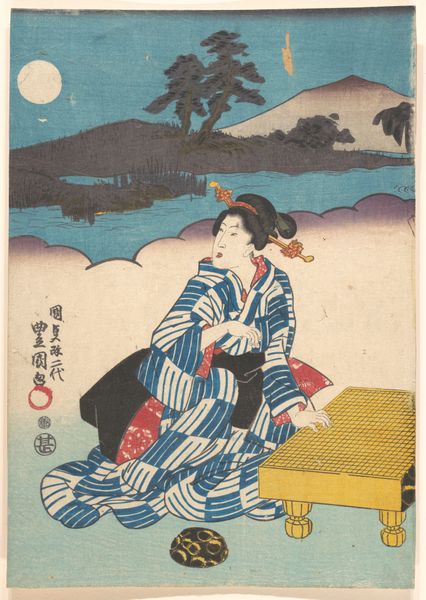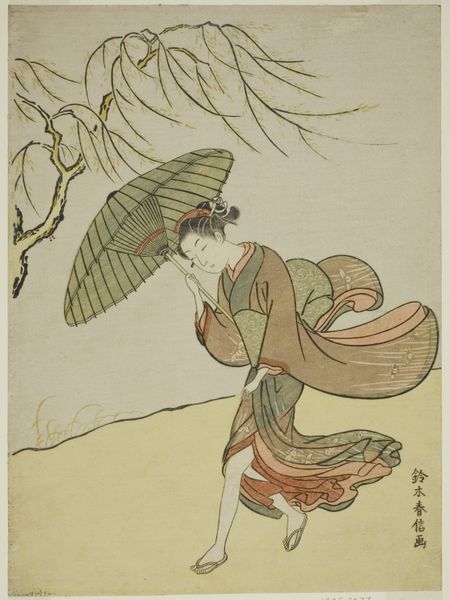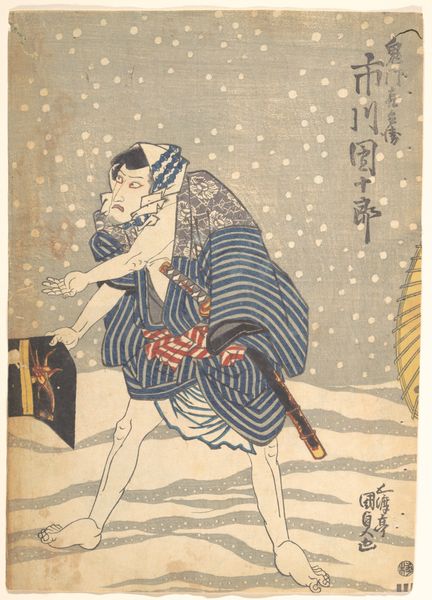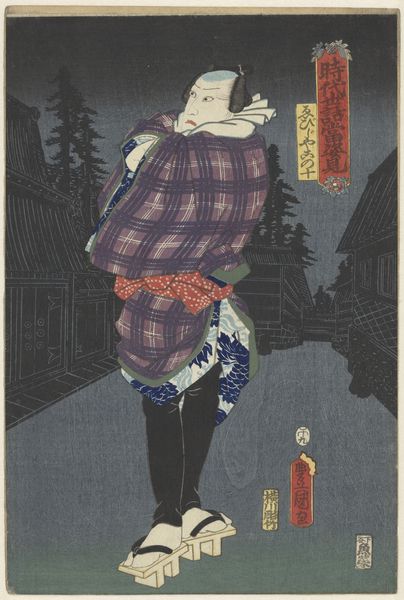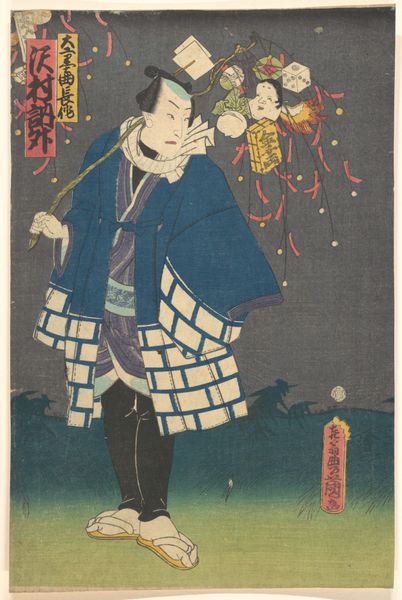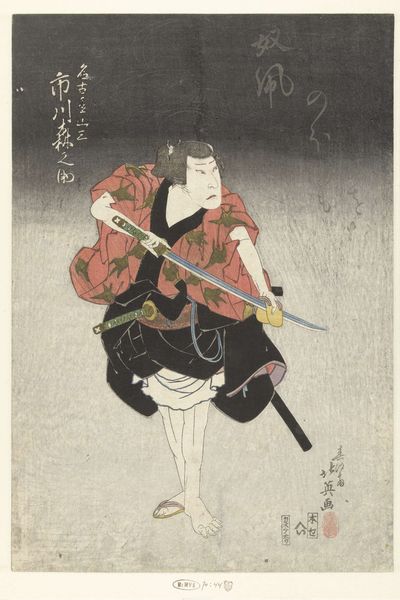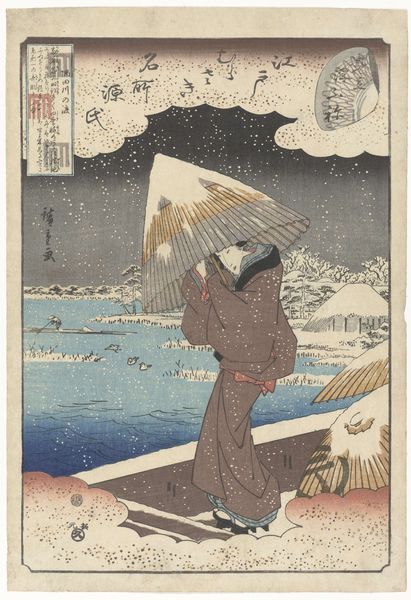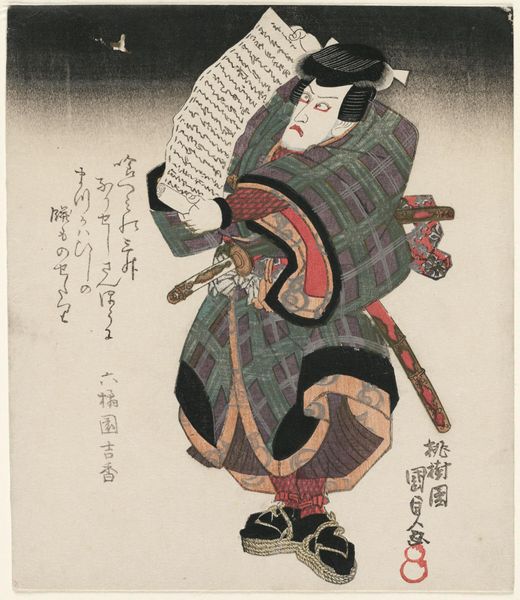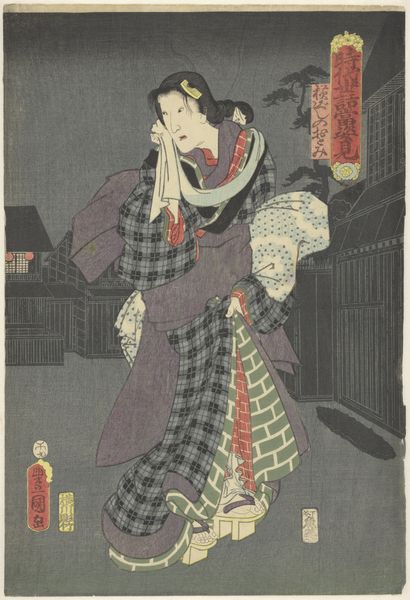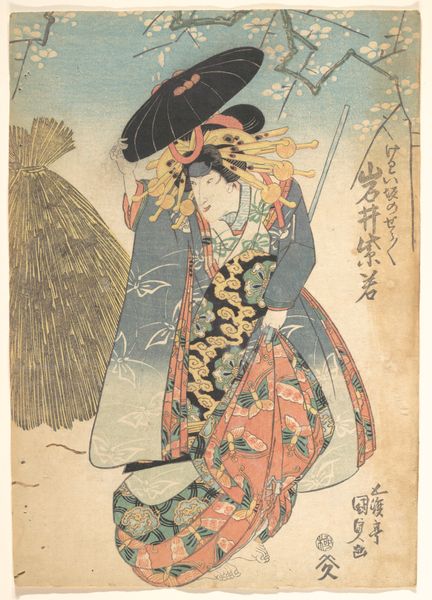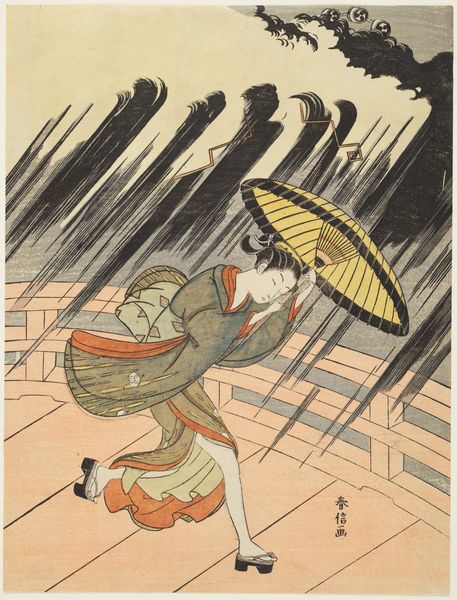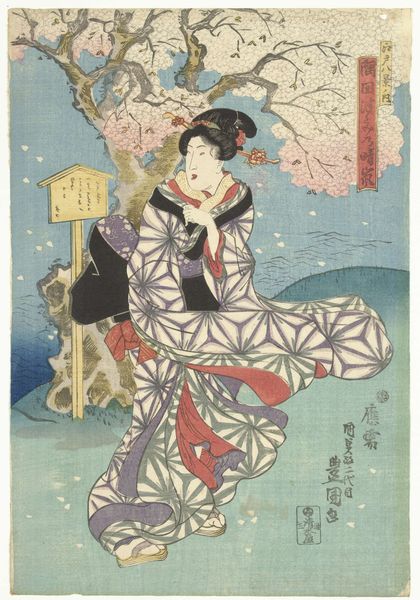
Dimensions: height 218 mm, width 184 mm
Copyright: Rijks Museum: Open Domain
This woodblock print, "Kisegawa met lantaarn in de regen," was created by Utagawa Kunisada in Japan. The central motif is that of a woman in the rain, holding a lantern. In Japanese art, the lantern is not merely a source of light, but a symbol of guidance, hope, and the dispelling of darkness, both literal and metaphorical. The lantern appears in countless iterations across cultures, from the oil lamps of ancient Greece to the candlelit processions of the Renaissance. Its meaning evolves, yet it remains a potent symbol of enlightenment and the search for truth. Here, the woman's precarious stance and the downpour suggest uncertainty, perhaps even fear. Yet, the lantern offers a glimmer of hope, cutting through the oppressive darkness. Such images tap into our collective unconscious, stirring primal emotions related to safety, guidance, and the triumph of light over darkness. This visual language, passed down through generations, continues to resonate, reminding us of our shared human experiences and the enduring power of symbols. This image exemplifies how cultural symbols transform and adapt, reappearing across time and space with shifting nuances.
Comments
No comments
Be the first to comment and join the conversation on the ultimate creative platform.
